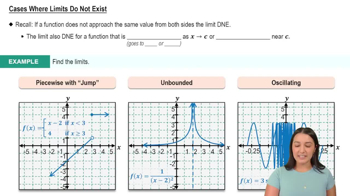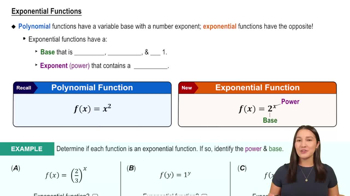Given the position equation , calculate the average velocity (in meters per second) based on the given time interval, and the instantaneous velocity (in meters per second) at the end of the time interval.
,
 Verified step by step guidance
Verified step by step guidance Verified video answer for a similar problem:
Verified video answer for a similar problem:



 6:29m
6:29mMaster Derivatives Applied To Velocity with a bite sized video explanation from Patrick
Start learning